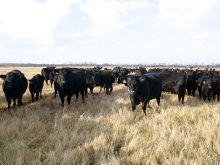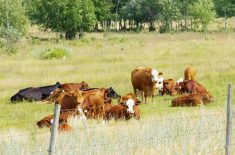Type and purpose important | Producers could improve their marketing, says a hay exporter
OLDS, Alta. — Canadian hay exporters need to do their homework before shipping hay to the United States, says a Canadian specializing in hay exports.
Jim Glen of Glen Isle Farms Ltd. said it’s important for farmers to understand what the customer wants rather than just try to sell what they have.
Does the customer want alfalfa, grass or a mixture of hay? Is it for dairy cows, horses, sheep or goats? Does the customer want 12, 14 or 16 percent protein hay, or is it simply roughage that is required for a dairy diet?
Read Also

Farming Smarter receives financial boost from Alberta government for potato research
Farming Smarter near Lethbridge got a boost to its research equipment, thanks to the Alberta government’s increase in funding for research associations.
“You need to understand the customer needs,” he told the recent Canadian Forage and Grasslands Association conference.
“We’re all good at producing, but when it comes to marketing, there is room to improve.”
Glen said trucking is one of the biggest headaches when shipping feed to the U.S. Sellers need to know how many loads customers want, when they want it and if the hay can be sent as part of a back haul.
He has 20 trucks, which often go to the U.S. with hay and return with products such as steel and bees.
“If a customer location is 500 to 800 miles away, are we going to charge full rate trucking or one way backhaul,” he said.
Add in broker fees, toll roads and other fees, and transportation costs can increase quickly.
Glen said producers must sell customers what they asked for and not slip in poor quality bales that were on the bottom of the stack. Sellers who have trouble filling a multi-truck order should take a sample of other hay, he added.
Chris Kletke, a Manitoba hay producer, said he travelled 5,500 kilo-metres in seven days last February while on a hay exporting fact finding mission to the U.S..
He said there is a market for every quality and price range from weathered hay to mix in with dairy rations for roughage to high quality hay.
“These guys can find alternatives. Alfalfa can only go so high.”
He said he talked to a hay broker from Oklahoma who was looking for every kind of forage from peanut stocks to high quality alfalfa.
“They process the best and grind the rest,” Kletke said.
“They believe every quality hay has a place from $30 a tonne to $350.”
He said one of the keys to selling into the U.S. market is knowing exactly what kind and quality of hay is being sold.
“There is value in knowing your product.”
He said knowing how to deliver the hay is another consideration.
“Transportation is the largest factor in a marketing plan and is Western Canada’s biggest issue. Whether you are trying to move wheat out of Winnipeg or hay out of Alberta, know your freight before you market.”

















